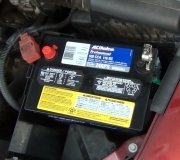You need to properly diagnose the system. Randomly throwing parts at a problem is very expensive and introduces more variables into the problem.
To start with, use any cheap digital voltmeter to measure the voltage between the two battery terminals while the engine is running. It must be between 13.75 and 14.75 volts. Too low and the battery will not be fully charged while driving; too high, (over 15 volts), and the water will start to boil out of the electrolyte.
If you find an acceptable voltage, the charging system is working properly. If the voltage stays the same as when the engine is not running, around 12.5 volts or less, there are simple tests to diagnose the cause of a dead charging system. It's very rare to have a defective voltage regulator, which is in the engine computer. Much more likely are corroded connector pins in the wiring harness. Worn alternator brushes are common on high mileage vehicles too, but you already replaced the alternator.
If you do find low battery voltage when the engine is running, measure the voltage on the three wires on the alternator. The single large wire bolted on the back must have full battery voltage all the time. If it doesn't, look for a blown fuse, typically a 140 amp, or a corroded large bullet connector near the battery.
The two small wires will only have voltage on them when the engine is running. One must have full battery voltage; the other must have less than battery voltage but not zero volts. The lower the voltage, the harder the alternator is working to produce current. If you find the same voltage on both small wires, there is a break in the wiring / connector pins between the alternator and engine computer, or an open regulator. If you find 0 volts on both small wires, there is a break between the alternator and the splice where this circuit branches off to feed the injectors and coils. Since the engine runs, you know the circuitry is good up to that point. The second small terminal will rarely go below 4 volts. If you find 0 volts on only that one small terminal, and battery voltage on the other one, the brushes are worn. They can be replaced without having to replace the entire alternator. The only other way there can be 0 volts there is if the wire is shorted to ground somewhere, but that would cause the alternator to charge wide open all the time. Battery voltage would be much too high, as high as 18 volts or more. You'd have different symptoms including numerous popped light bulbs, possibly various damaged computers, and the "Check Engine" light would be on.
Assuming the charging system is working properly, but the battery is drained after a few hours or over night, you'll need to diagnose that drain. Common places to start are a trunk light not turning off and a glove box stuffed too full with papers causing the lamp holder to bend and not switch off.
There's a computer near the left front tire; can't remember if it's the engine or body computer; that goes to "sleep mode" 20 minutes after the ignition switch is turned off. During that 20 minutes, it will sing and draw about 3 amps. If it fails to turn off, it will drain the battery in a few hours. Two low beam headlamps draw around 10 amps, so this computer will drain the battery in about three times the amount of time leaving the headlamps on will.
If you don't find the problem, holler back with the three voltages on the alternator pins.
Caradiodoc
Friday, November 27th, 2009 AT 1:59 AM

